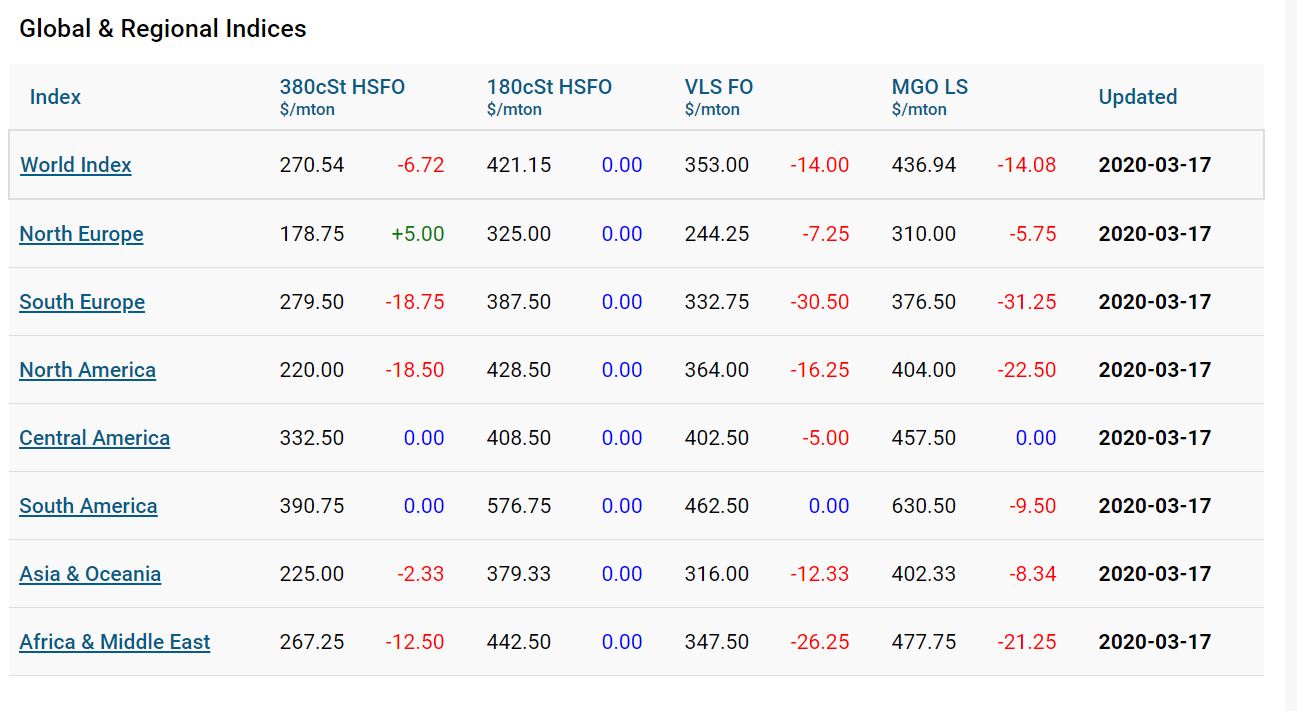Oil prices have fallen into the high US$20/bbl range, around US$220/tonne, and in some regions the spread has increased, mainly because the price of 380 HFO has fallen faster than VLSFO. A very unexpected turn of events.
The main talking point, however, is the collapse in demand in some regions for manufactured goods and the consequent fall in demand for containerised shipping services.
Surprisingly, that may not mean that there will be further price deterioration in the bunker price, with some analysts saying that the shale gas industry will stop production imminently, adding to the upward pressure on crude oil prices and the cost of bunkers in turn.
According to some analysts the shale gas industry needs the price of oil to be at or above US$35/bbl for the industry to break even, and that is just for the cost of drilling. Other costs such as interest, and transportation are not covered.
By way of contrast downward pressure will come from the demand side as the Covid-19 viral epidemic shuts down large portions of the European and US economies, which will see transportation demand, fall substantially, including airline passenger travel along with a sharp decline in energy demand.
The United Nations body, UNCTAD, reports that volumes handled at Chinese ports in January 2019 fell dramatically to around 1.6million TEU from 2.8 million TEU in early December 2018. On the 1 November 2019 the Chinese port throughput figure showed a dramatic fall to 1.2 million TEU from 3m TEU two weeks earlier.
Instead of the post-Lunar New Year recovery, however, Chinese ports have continued to see another sharp decline and as of 1 March Chinese ports handled just 400,000TEU.
Even as Chinese manufacturing comes back on stream it is unclear what the level of demand will be as much of Europe goes into lock down with he US and the rest of North America very likely to follow suit.
In these uncertain times it also remains unclear how the price differential between heavy fuel oil and low sulphur fuels will play out. But one thing is for certain, the spread will be played out at a considerably lower level than was expected when the sulphur cap was introduced just 11 weeks ago.







